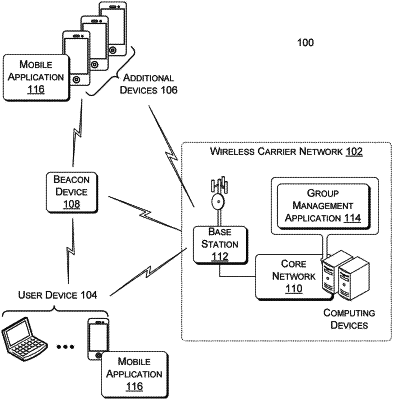| CPC H04W 12/37 (2021.01) [H04W 4/021 (2013.01); H04W 4/023 (2013.01); H04W 4/029 (2018.02); H04W 4/50 (2018.02)] | 19 Claims |

|
1. A method comprising:
identifying, with respect to a first user account, a first relationship associated with a first additional user account and a second relationship associated with a second additional user account, the first user account associated with a first user device;
identifying a first additional user device associated with the first additional user account and a second additional device associated with the second additional user account;
determining a first activation condition that, upon being satisfied, activates the first relationship and a second activation condition that, upon being satisfied, activates the second relationship;
determining a first usage setting to be enforced with respect to the first additional user account and a second usage setting to be enforced with respect to the second additional user account, wherein the first usage setting is configured to restrict a first functionality of the first additional device or require the first additional device to remain within a first geographic area and the second usage setting is configured to restrict a second functionality of the second additional device or require the second additional device to remain within a second geographic area;
receiving, from the first additional user device, first information related to a first status of a first user of the first additional user device;
receiving, from the second additional user device, second information related to a second status of a second user of the second additional user device;
comparing the first status of the first user of the first additional user device to the first activation condition;
based on comparing the first status of the first user of the first additional user device to the first activation condition, determining that the first status of the first user of the first additional user device satisfies the first activation condition;
based on determining that the first status of the first user of the first additional user device satisfies the first activation condition, providing, to the first user device, a first determination that the first additional user account is in compliance with the first usage setting;
comparing the second status of the second user of the second additional user device to the second activation condition;
based on comparing the second status of the second user of the second additional user device to the second activation condition, determining that the second status of the second user of the first additional user device does not satisfy the second activation condition; and
based on determining that the second status of the second user of the second additional user device does not satisfy the second activation condition, bypassing providing, to the first user device, a second determination that the second additional user account is not in compliance with the second usage setting.
|